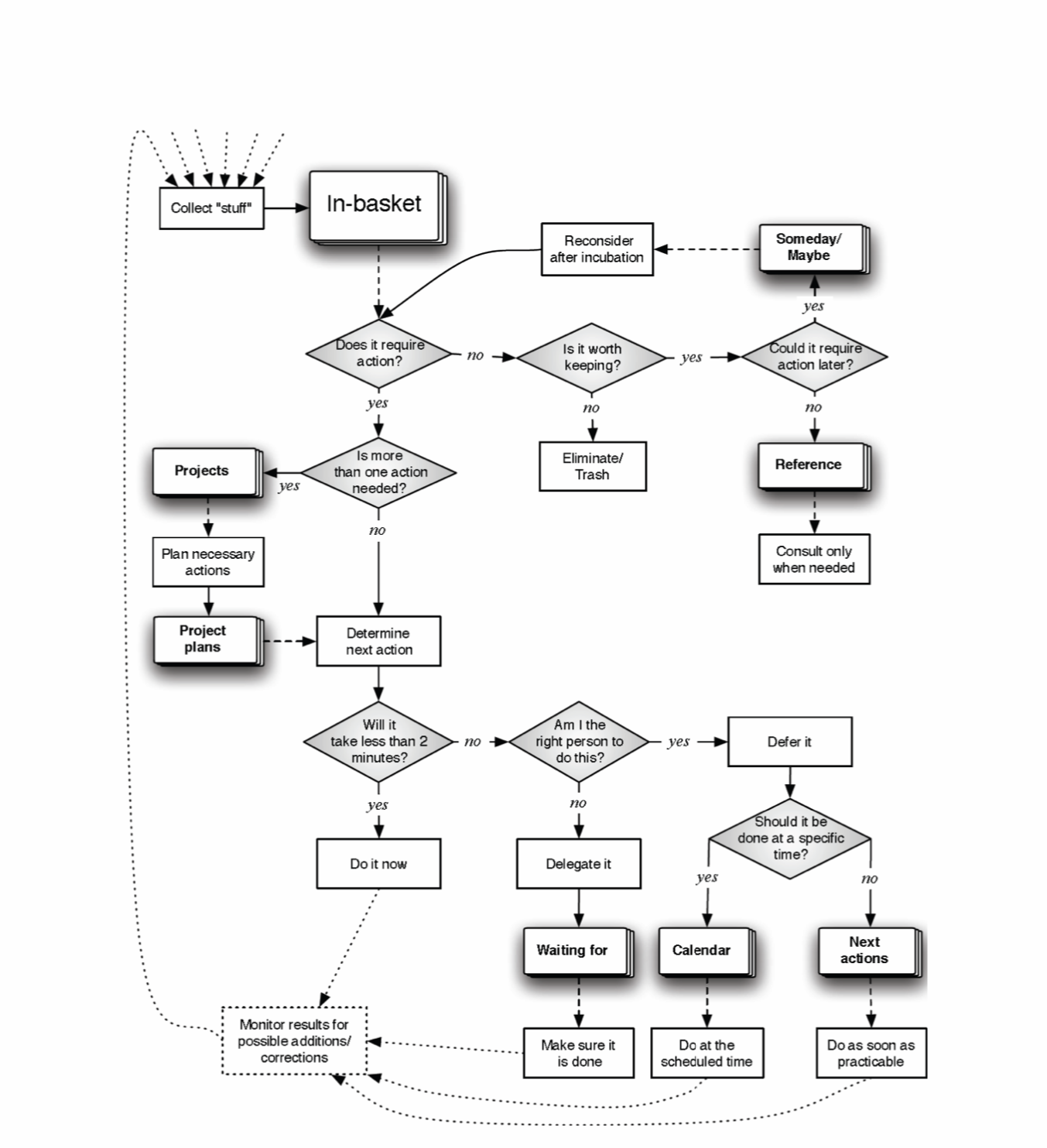Filtest
Notes on the Workflow Diagram

-
In-basket
- This is a collection point for all incoming tasks or items that need attention.
- Thoughts: Having a centralized place for tasks can help reduce overwhelm and keep focus sharp.
-
Reconsider after incubation
- This suggests taking a break before making decisions on certain items.
- Additional Information: Incubation allows thoughts to mature, which can lead to better decision-making.
-
Does it require action?
- A fundamental question to determine the next steps for each item in the in-basket.
- Ideas: It can be useful to categorize tasks into actionable and non-actionable right away.
-
Is it worth keeping?
- This checks if the item has long-term value.
- Thoughts: Regularly assessing the worth of items can prevent clutter in your task system.
-
Eliminate/Trash
- A clear pathway for disposing of irrelevant items.
- Additional Information: This step is crucial for productivity; getting rid of unnecessary tasks keeps focus on what matters.
-
Projects
- Refers to items that require multiple actions to complete.
- Ideas: Organizing tasks into projects can help visualize larger goals.
-
Plan necessary actions
- Developing a step-by-step approach for managing project tasks.
- Thoughts: Planning helps in breaking down complex tasks into manageable steps.
-
Is more than one action needed?
- This decision point divides tasks that can be done in one step from those needing multiple actions.
- Additional Information: This distinction aids in effective task management.
-
Determine next action
- A process to outline the immediate next step for a task.
- Ideas: Clear next actions can significantly reduce procrastination.
-
Will it take less than 2 minutes?
- A quick check to identify tasks that can be completed immediately.
- Thoughts: This principle is based on the idea that completing small tasks now can free up mental space later.
-
Do it now vs. Delegate it
- Deciding whether to handle a task personally or pass it on to someone else.
- Additional Information: Delegating can help manage workload effectively.
-
Am I the right person to do this?
- A reflective question that assesses if the task aligns with one’s skills or responsibilities.
- Thoughts: This can lead to better outcomes when tasks are handled by the most suited individuals.
-
Defer it
- Indicates that a task should be postponed rather than addressed immediately.
- Ideas: Deferring can be useful if priorities shift or if additional information is needed.
-
Should it be done at a specific time?
- This helps to determine if a task is time-sensitive.
- Additional Information: Time management is crucial in project success.
-
Next actions
- This refers to tasks that need to be done as soon as feasible.
- Thoughts: This mindset fosters a proactive approach to responsibilities.
-
Monitor results for possible additions/corrections
- A system for tracking the outcome of actions taken on tasks.
- Ideas: Continuous monitoring can lead to improvements and adjustments in ongoing projects.
Reference:
forum.gettingthingsdone.com
Everything is Actionable? | Getting Things Done® Forums
gettingthingsdone.com
[PDF] GTD® Workflow Processing and Organizing - Getting Things Done
www.lucidchart.com
What is a Workflow Diagram - Lucidchart